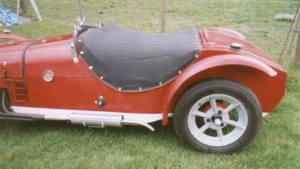
The essence of a ‘special’ is the special tuning parts built into it so it looks, sounds and goes like you want it to. This page shows details of some of the special parts made and sold by the company for these cars.
A collation of the engine parts built into an engine.
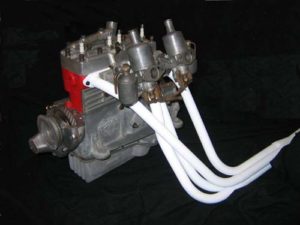
Austin 7 aluminium cylinder head
This cylinder head was designed to overcome the low compression and breathing shortcomings of the standard cast iron heads. Two versions appeared a ‘Mark 1’ that used the Austin 7 pear shaped water outlet in the traditional place pointing forward as the one on the right. Most SEEDEX heads are the ‘Mark 2’ version, as shown below to the left. This had a specially cast water outlet based on a straightened water inlet branch – a SPEEDEX first that other tuning companies copied as it had the advantage of being able to be used either way round, pointing forwards for a traditional type special with thermosyphon radiator or rearwards for a low special with a bulkhead mounted head tank, crossflow radiator and water pump. Click here to read more about crossflow systems.



Head nuts are hard to tighten with this head as the cast ribs and water branch interfere with the socket. I have found the Austin ‘barrel nuts’ normally holding the block down make good head nuts as they lift the hex away from the ribs.
For some reason not all the heads have ‘SPEEDEX’ cast into them as the Mk 1 above.
Try Champion N8, N5C or NGK B7ES plugs with this head.
Water branches
The SPEEDEX head used a special water branch based on the standard Austin side branch. This was recast to allow the water to come straight up and out of the head rearwards towards a bulkhead mounted header tank. The branch shown on the head above (and the centre one in the picture below) is a Supaloy one—it comes straight up. The SPEEDEX one comes up and bends slightly to the left, note the SPEEDEX logo cast into it. The third is a standard side branch, a ribbed Reliant one in this case. Many SPEEDEX and Supaloy heads have lost their water branches and they’re becoming difficult to source.

Austin 7 aluminium sump
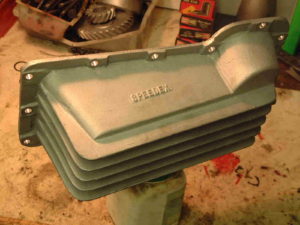
The aluminium sump increases the oil capacity and through rigidity stiffens up the crankcase making an oil tight joint easier to get. Like the ‘Nippy’ sump it is ribbed along the bottom but also up the front to increase cooling, an internal baffle makes the oil flow across the base to further improve cooling. This is a cosmetically re-badged ‘Dante’ item. Increased capacity is useful if you’re doing a long journey with a leaky engine but other than that it has a reputation for over cooling and not letting the oil get up to a working temperature. I have heard that some have filled in the webs with foam sealant to give the oil a fighting chance of warming up.
SPEEDEX aluminium wheels
These were perhaps the definitive SPEEDEX items to have on your car and were one of the first things advertised by the company when it started trading. These wheels like a number of other castings are copies of Dante parts. A few sets of Dante wheels were made before the company folded. You can tell the difference from the shape of the holes through the webs, Dante have round holes, SPEEDEX have curved segments as per these pictures. If you buy a set and the special wheel nuts have been lost drop me an email, I’ve got a sample and can let you have a drawing to get a set made. A few remanufactured sets of SPEEDEX style wheels have also been made.

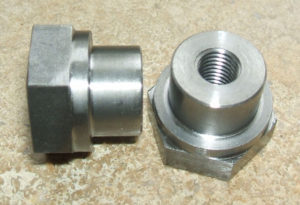
Austin 7 aluminium tappet chest cover
The standard side cover has a reputation for oil leaks, sometimes unjustifiably being blamed for what is a leak from the block to crankcase joint. In response the specialist companies produced stiff cast aluminium side covers that could have a good gasket fitted between two flat surfaces. The top one has an unusual ‘SPEEDEX’ script, I have seen others and it matches the logo on the early SPEEDEX adverts. The lower one is the more usual.


SPEEDEX Revcounter
SPEEDEX supplied their own revcounter rather optimistically graduated up to 7500 rpm! It has a very distinctive ‘SPEEDEX’ logo on the face and was unusual in that it rotated counter clockwise driven by a cable drive from the bottom of the distributor. New revcounters have been reproduced, on the left below compared to a genuine one, and are economically available on Ebay. The unusual rotation of the revcounter is necessary due to the direction the distributor turns. If you’re making a drive ensure the drilling of the dynamo is perfectly concentric with the distributor or it will chew up the cables. Thanks to Chris Oliver for the dynamo picture.
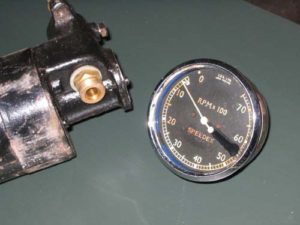
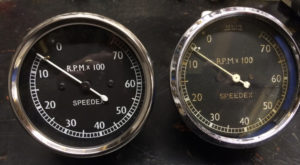
Water pumps
SPEEDEX’s have low crossflow radiators with a header tank and a Ford 10 ‘Export’ water pump mounted onto the SPEEDEX front shocker frame. New ones are still available from Small Ford Spares, also the aluminium Aquaplane version if you’re feeling a bit richer or want to avoid the not inconsiderable weight of the cast iron Ford pump. A modern alternative is to use an electric water pump, see the section on cooling systems for more detail. The pump was driven by a steel or aluminium pulley on the cam shaft replacing the Austin flat belt pulley. These aluminium pulley’s tend to open out in the centre if they’ve been previously over tightened onto the camshaft taper, they really should have a steel or brass centre.
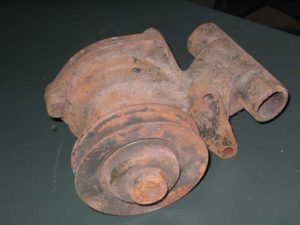
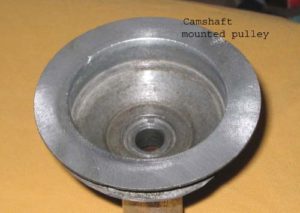

Inlet manifolds
As like all the tuning specialists SPEEDEX supplied a range of manifolds for the A7. Twin SU semi downdraught and sidedraught for both 1” and 1 1/8”were popular but they also did single side and downdraughts for SU’s and Zenith carbs as well as a twin Zenith downdraught and twin choke Stromberg manfolds. There were even twin manifolds for Amal carbs as per the bottom picture. With all these especially when combined with a tubular exhaust manifold, getting the manifold nuts on and secure can be hard. Try fitting tubes to the long studs. Don’t be tempted to fit Allen screws straight into the block, all the water will come out every time you remove them and they’ll leak in between times. If you have to have short studs just to get them in weld up some extended nuts with two nuts axially joined by a few inches of 1/4” tube.
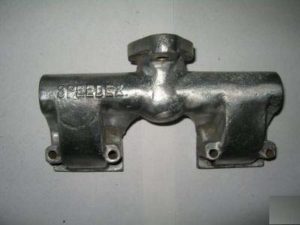
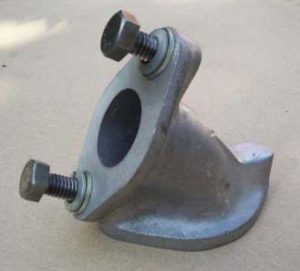

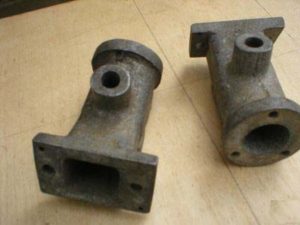

A twin Zenith manifold. Note that the rear carb should be the other way round matching the front carb.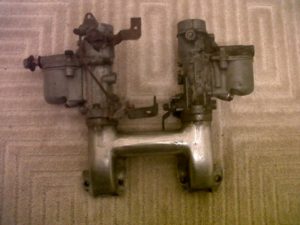
A neat installation with a sidedraught SU on a SPEEDEX manifold. Note how the mounting flange is horizontal taking the earlier type of SU or the standard side draught Zenith. Similar manifolds are available new from John Barlow. It’s a good way to get a decent carb under a narrow bonnet.
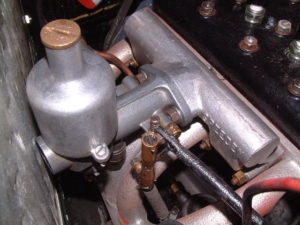
SPEEDEX steel exhaust manifold
The manifold was sized to fit the shape and size of the SPEEDEX 750 giving an exhaust system that ran along the outer edge of the body. The definitive thing to spot in the SPEEDEX manifold is the pipe from number 1 cylinder crossed over to give the same length as the other three pipes.
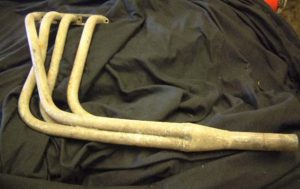
Three Eared Spinner
To give the impression of knock on splined wheels these spinners could be fitted to standard wheels. Various types were made by the different tuning companies. Dante started the three eared type and SPEEDEX seem to have taken up the same pattern. Other companies had 2 eared ones making these quite distinctive.

Independent front suspension
The Austin beam axle was an old design with limitations even when modified into a lowered sports shape. Independent suspension units were fashionable in the ‘50’s both on new cars and as something to add to your special. Unfortunately they work best on a very rigid chassis, not something the Austin 7 chassis is renown for. However if you want your car to reflect the ethos of the time, this was/is the thing to have. SPEEDEX like all the tuning firms produced their own version of the suspension unit. The most popular type was the Bowden twin spring type with two springs one above the other, the axle ends clamped between the ends. The SPEEDEX version only had one spring with two tubular arms forming the bottom joints. They were available in two widths, 3’ 5” to fit under a standard A7 saloons wings and for specials a wider 3’ 10” to improve road holding and giver a wider stance matching the width of a later back axle.


See also the page about Independent Suspensions on this site.
Shock absorber frames
Those cars using a Ruby chassis as a basis needed a simple cross tube across the rear chassis extensions to mount the telescopic shock absorbers. Pre Ruby chassis’, both long and short wheel base, needed a more substantial frame picking up from the horizontal extensions back from the rear spring mounting. From the picture (not a very good one I’m afraid) you can see it also had a platform mounting for a battery (two dropping tubes on the right) and brackets over the transmission tunnel for a handbrake lever. A Mini hand brake lever fits straight in and used the twin Mini cables.

A bracket was available to mount telescopic shockers onto the front Independent Suspension. This picture has the bracket (the black part above the red spring) in place. Note the vertical strap towards the left side of it to mount the Ford water pump.
Tonneau cover
Speedex made covers in a range of colours. This one is an original black cover piped in red. Thanks to Ian Clayton for the picture.